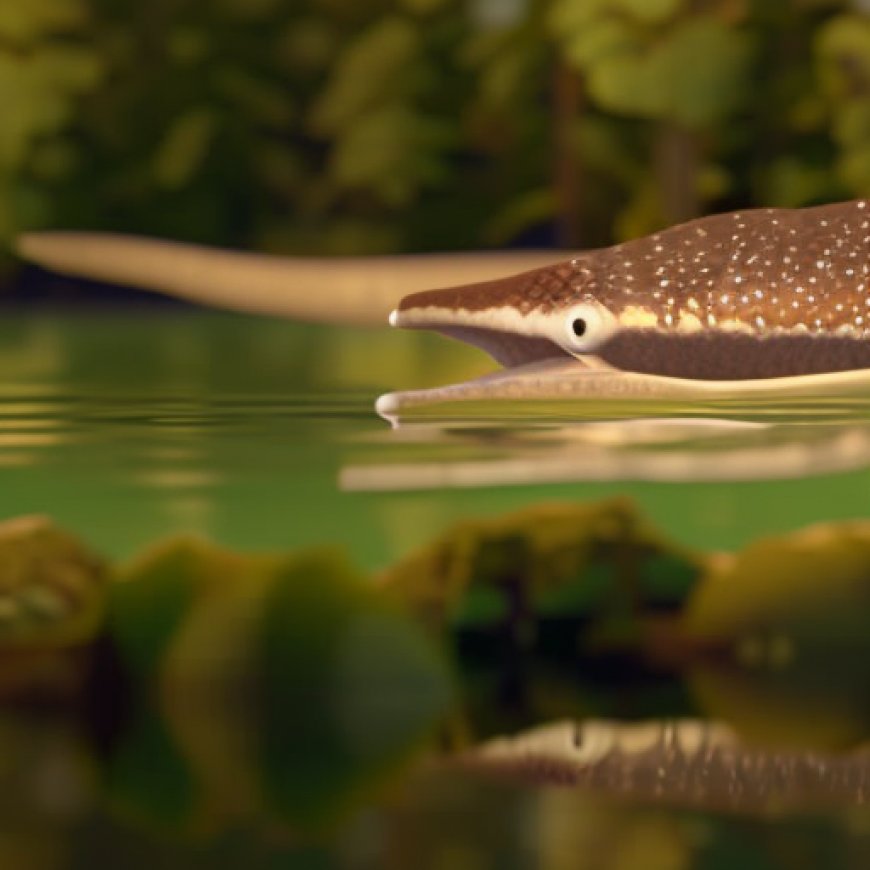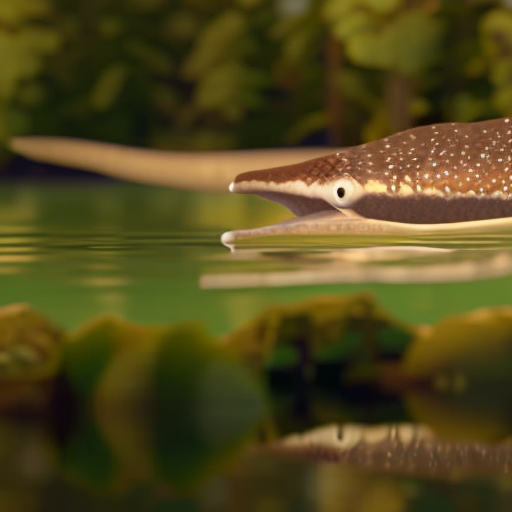To learn about rare lake sturgeon, Iowa researchers turn to another prehistoric fish
To learn more about rare lake sturgeon, Iowa researchers turn to another prehistoric fish The Gazette


Decline of a river giant
Lake sturgeon are one of 25 known species of sturgeon — fish that have persisted since the Cretaceous period when dinosaurs roamed Earth.
The fish can live to be 100 years old and swim thousands of miles. They inhabit the depths of large rivers, dig around river bottoms and vacuum up their food. Since lake sturgeon need clean water to spawn and survive, they are indicators for healthy aquatic ecosystems.
In Iowa, lake sturgeon are concentrated in the Mississippi and Missouri Rivers and likely found in major tributaries like the Des Moines, Iowa and Cedar Rivers. The species’ native range spreads throughout the Midwest and into the Northeast.
Iowa range of lake sturgeon
The lake sturgeon’s native range stretches from the Missouri River over to the Northeast. Their current range remains similar, said Ryan Hupfeld, an Iowa Department of Natural Resources large rivers fisheries research biologist studying sturgeon. In Iowa, lake sturgeon are concentrated in the Mississippi and Missouri Rivers and likely found in major tributaries like the Des Moines, Iowa and Cedar Rivers.
Click to view a larger, interactive version of this map
Source: U.S. Geological Survey
Fish helping fish
Seasonal worker Zeman reached his gloved hands into the 100-gallon container on the boat and pulled out a shovelnose sturgeon.
He laid it flat against a ruler, measuring its length. He noted its fat belly and determined it was female. After he weighed the squirming fish, he brought it to Mack, who clipped a tag to one of the sturgeon’s pectoral fins, then implanted one into its cheek.
“She is locked and loaded for the rest of her life,” Mack said as he gave Zeman the go-ahead to release the fish back into the river.
A brighter future
Lake sturgeon show up infrequently. But, when they have been caught, they’ve appeared in different sizes and ages — good signs that reproduction is happening.
“I think their numbers are pretty stable, potentially increasing,” Hupfeld said. “But we just don’t have the hard data for that currently.”
That may change soon, though.
Over the next two years, the Iowa DNR will develop a management plan for lake sturgeon. The plan will establish goals for the species, outline monitoring strategies, identify data gaps and make recommendations for habitat improvements.
It also calls for more research on the endangered species. Biologists must develop baselines for current lake sturgeon populations to gauge how future work impacts the species.
Thanks to the ongoing shovelnose sturgeon research, there’s already a path there.
“We need to manage these species. We’re developing ways to get at that with shovelnose sturgeon, which could lead to methodology to do that for lake sturgeon as well.” Hupfeld said. “It’s pretty in-depth. It’s gonna take a bit of time. But it’s really important.”
SDGs, Targets, and Indicators
SDGs addressed or connected to the issues highlighted in the article:
- SDG 14: Life Below Water
- SDG 15: Life on Land
Specific targets under those SDGs based on the article’s content:
- SDG 14.2: By 2020, sustainably manage and protect marine and coastal ecosystems to avoid significant adverse impacts, including by strengthening their resilience, and take action for their restoration in order to achieve healthy and productive oceans.
- SDG 15.5: Take urgent and significant action to reduce the degradation of natural habitats, halt the loss of biodiversity, and protect and prevent the extinction of threatened species.
Indicators mentioned or implied in the article that can be used to measure progress towards the identified targets:
- Population data on lake sturgeon and shovelnose sturgeon
- Data on reproductive habits and spawning success of lake sturgeon
- Data on habitat improvements for sturgeon populations
- Data on the impact of dam operations on sturgeon reproduction
- Bomb radiocarbon dating to estimate the lifespan of sturgeon
Table: SDGs, Targets, and Indicators
| SDGs | Targets | Indicators |
|---|---|---|
| SDG 14: Life Below Water | Target 14.2: By 2020, sustainably manage and protect marine and coastal ecosystems to avoid significant adverse impacts, including by strengthening their resilience, and take action for their restoration in order to achieve healthy and productive oceans. | – Population data on lake sturgeon and shovelnose sturgeon – Data on reproductive habits and spawning success of lake sturgeon – Data on habitat improvements for sturgeon populations – Data on the impact of dam operations on sturgeon reproduction – Bomb radiocarbon dating to estimate the lifespan of sturgeon |
| SDG 15: Life on Land | Target 15.5: Take urgent and significant action to reduce the degradation of natural habitats, halt the loss of biodiversity, and protect and prevent the extinction of threatened species. | – Population data on lake sturgeon and shovelnose sturgeon – Data on reproductive habits and spawning success of lake sturgeon – Data on habitat improvements for sturgeon populations – Data on the impact of dam operations on sturgeon reproduction – Bomb radiocarbon dating to estimate the lifespan of sturgeon |
Behold! This splendid article springs forth from the wellspring of knowledge, shaped by a wondrous proprietary AI technology that delved into a vast ocean of data, illuminating the path towards the Sustainable Development Goals. Remember that all rights are reserved by SDG Investors LLC, empowering us to champion progress together.
Source: thegazette.com

Join us, as fellow seekers of change, on a transformative journey at https://sdgtalks.ai/welcome, where you can become a member and actively contribute to shaping a brighter future.







